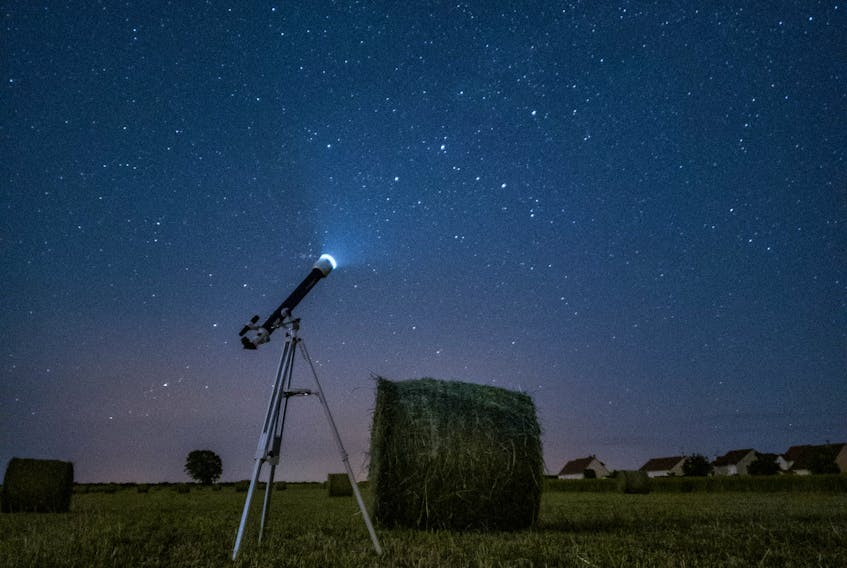Hi Sky Watchers,
In May I asked you to start “looking up” and not to keep looking down at the ground. I do realize that there is some danger to not look at where we are putting our feet, but it’s worth stopping from time to time. As always, it helps to get away from bright lights and at least having a little bit of darker sky to look up at.
So – some more “easies” to see with your own eyes.
Let’s start with what is maybe the largest and brightest asterism (picture) in the sky. It actually encompasses three constellations and is called the Summer Triangle. It can be seen from late spring until December but is clearly most prominent and easy to see at this time of year. So, how do we go about finding it? To start, look almost straight up (unless you have a stiff neck!) and you should see a quite bright star. This is Vega in the constellation Lyra the Lyre. You should be able to see a dim small parallelogram just below Vega and together they form the Lyre. Now look a little to the left of Vega and just slightly down and you should find a slightly less bright star. This is Deneb in Cygnus the Swan. This is also called the Northern Cross with Deneb at the top of the cross which runs down and to the right. Finally, if you draw a line to join Vega and Deneb and then drop down from the midpoint of this line, you will find a third bright star. This is Altair in the constellation Aquila – the Eagle. This star has two stars, one on each side of it and these help to form the wings of the Eagle.
These three stars – Vega, Deneb and Altair – form the Summer Triangle – bright and easy to see.
Ok, what about a second “easy”. Actually, I am going to give you a “set” of “easies”. Let’s go back to the Big Dipper and its handle. In May, I described following the curve of the handle, away from the Dipper bowl until you come to a bright star Arcturus which is at the bottom of the constellation Bootes the Herdsman. I described this as what I call the ice cream cone, extending upwards from Arcturus. Now, if we go from the Dipper handle, through the upper portion of the “ice cream cone”, we should find a small semicircle of about 8 stars (can vary with darkness). The brightest (not very bright) is in the middle of the semicircle. This semicircle is Corona Borealis – also known as the Queen’s Tiara – with a little imagination. Now a line from Arcturus through the left end of the Tiara, leads to a group of 4 stars, technically known as the “Keystone” of the constellation Hercules. I call it “The Flower Pot” because that is what it looks like to me – a pot in which you plant flowers.
Well, let’s try for a third one. It’s called “The Teapot” – not just by me! It’s a little trickier to find, but once you do find it, it is easy to see. Begin by looking in the South, at maybe 10 PM this month. You will have to look low towards the horizon, so you need a clear horizon. Looking out over water works well. As orientation, you should be able to find the bright star Antares in the South Southwest and perhaps 15 degrees up from the horizon. Then look to the left of this star and slightly downwards, and you should find the Teapot right there. Wow, if you look above the spout, you might even see the Vapor!!
- Full Moon - July 13th
- New Moon - July 28th
See you next month.
Dr. Rolly Chiasson is your Sky Guy. His astronomy column appears monthly in the Journal Pioneer









